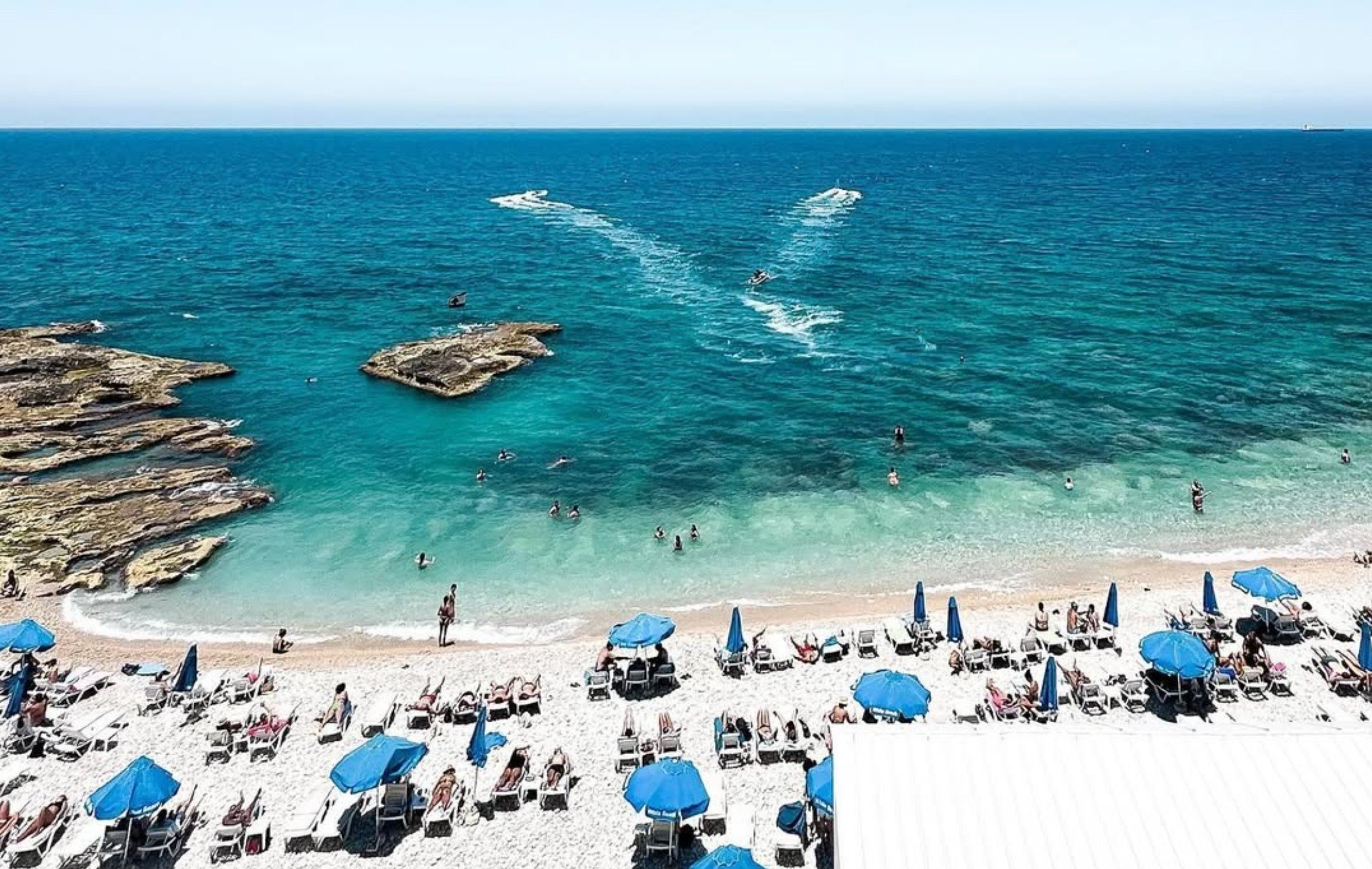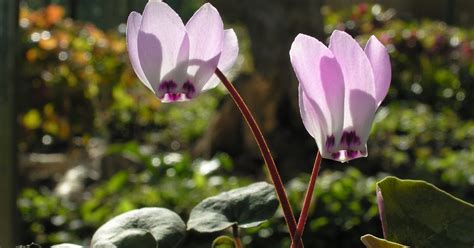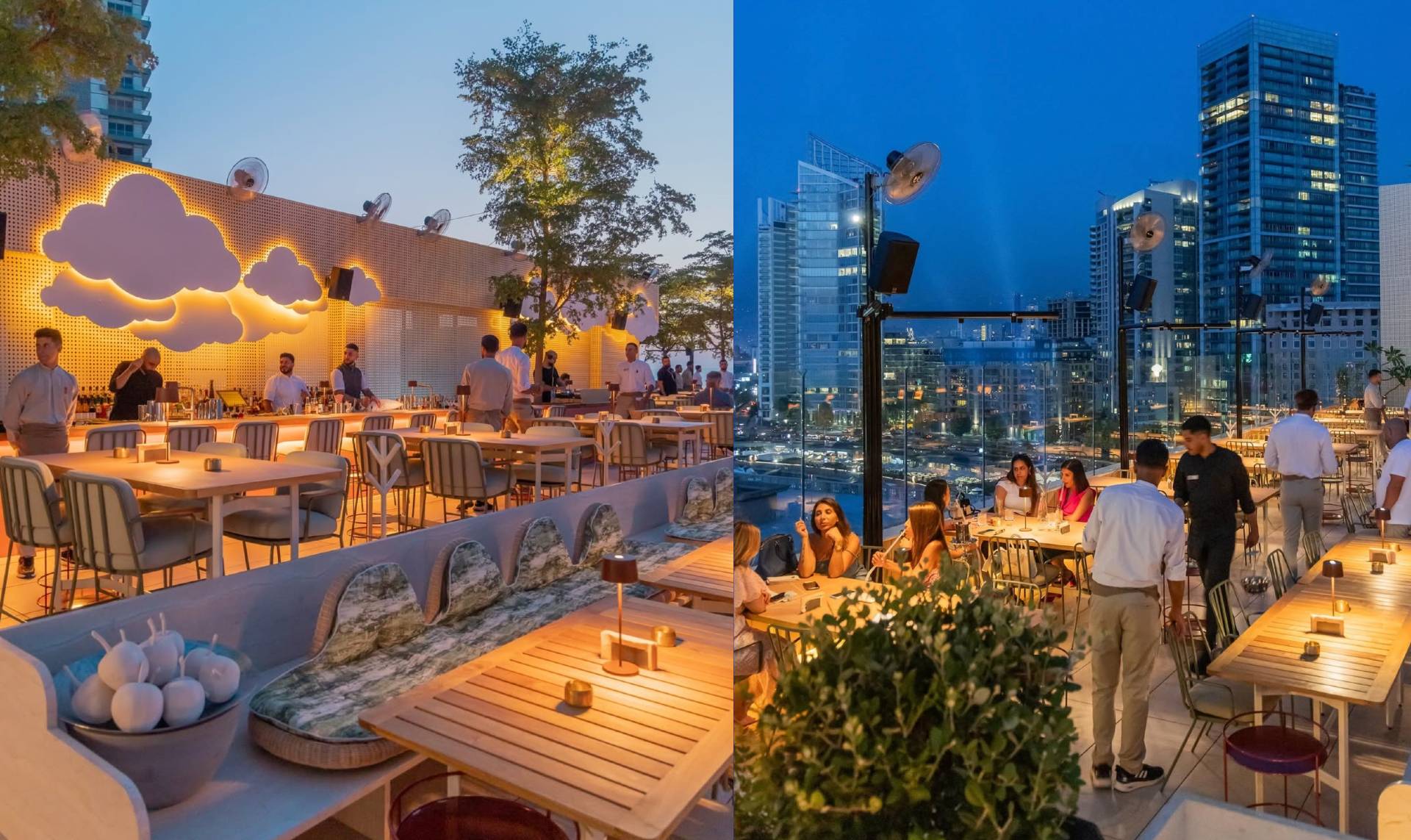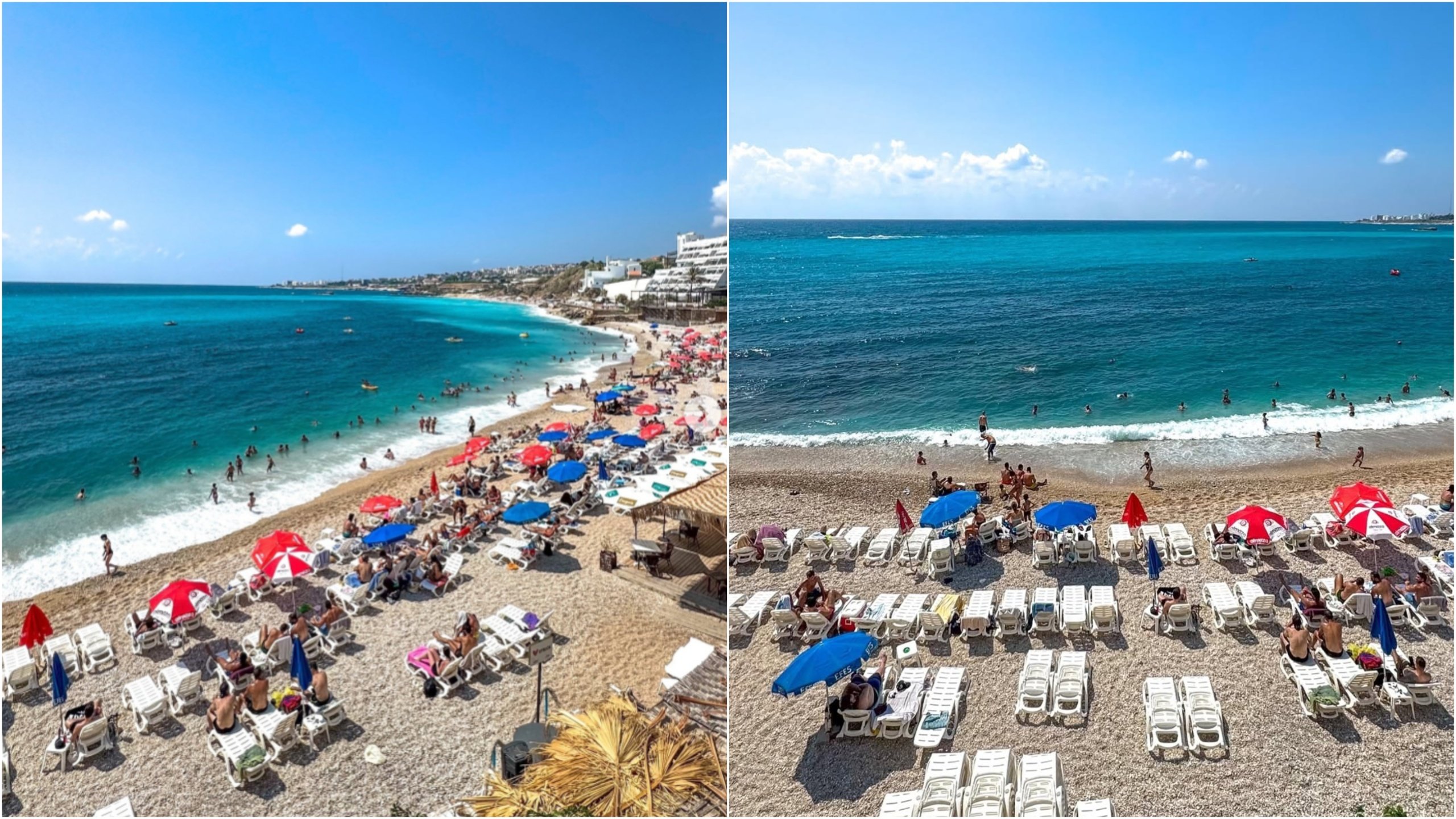Stuff We Love
British Artist Tom Young Collaborates With Lebanese Orphans To Capture Beirut’s Changing Landscape
British Artist Tom Young has come together with children from Dar Al Aytam Al Islamiyeh to capture Beirut’s changing landscape and history through art. This project was worked on for six whole months and was created at Al Zaher (known by the older Beirut generation as ‘Beit Safir Inglezi’).
Beirut.com spoke to Young about this project. In previous conversations, Young expressed his love and strong connection with Beirut, which stemmed from our wartime suffering, and his own.
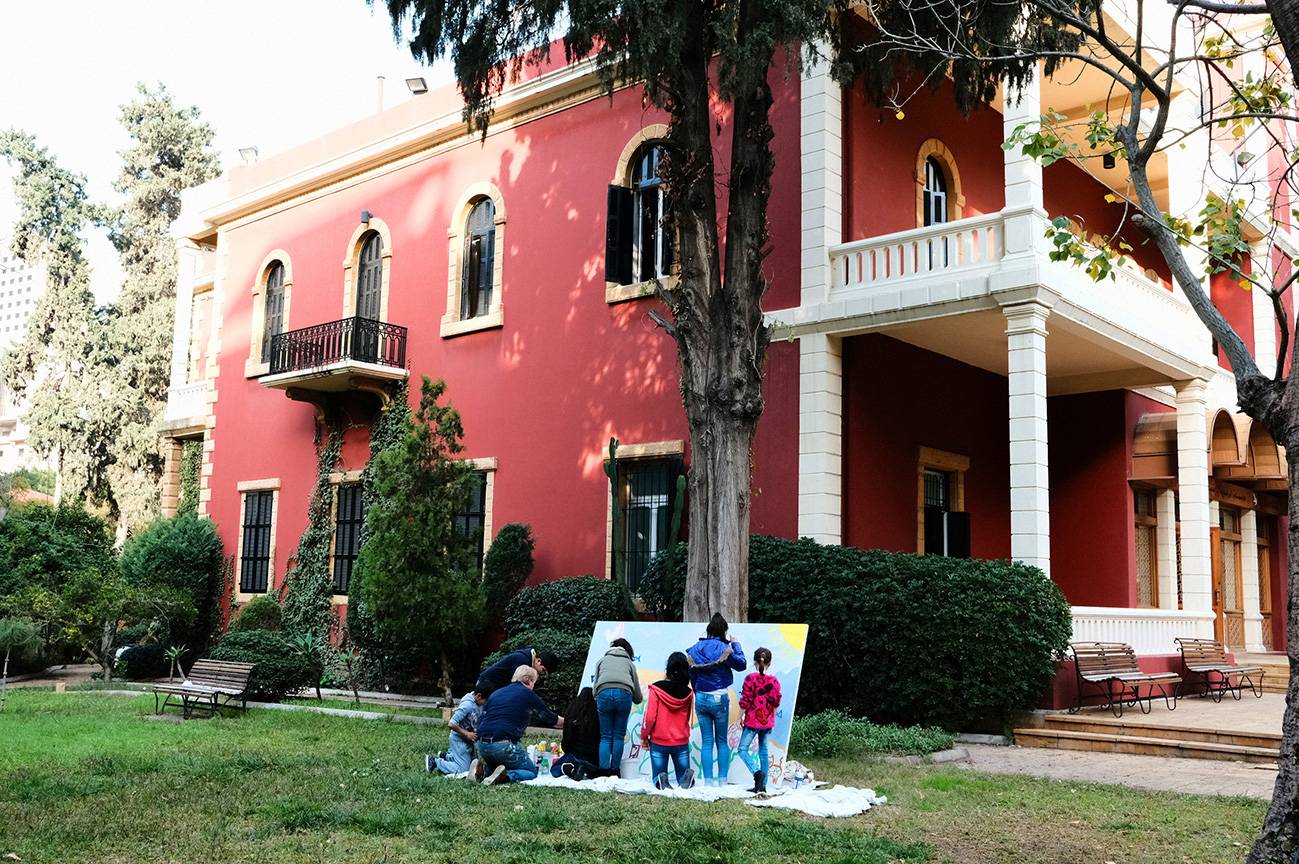
Image by Karim Sakr
Things haven’t exactly got better. Beirut’s state has deteriorated into chaos and rubbish (literally). Despite this, Young notes, “my love has taken a bashing. But that’s Beirut. It isn’t easy. And that’s how you know its real. Despite these serious challenges, the love survives. There are many positive stories too. The owners of Villa Paradiso have stayed true to their word and fully renovated it, there are many other exciting renovation projects happening, and on the whole the creative arts scene in Beirut now is better than I have ever known.”

Young is particularly passionate about preserving Beirut’s heritage.
On the concept behind the project, he tells us, “the idea behind the animation is to engage the children of Dar Al Aytam Al Islamiyeh in a collective project that we can all join together to create something fun, meaningful and beautiful together. Painting on the same canvas over and over again is a good way to express the many layers of history and memory embedded in the city, and an appropriate way to re-enact its constant cycles of destruction and reinvention. We explored its history from ancient times to the present day. By photographing each stage, nothing is lost. Its all part of the story.”
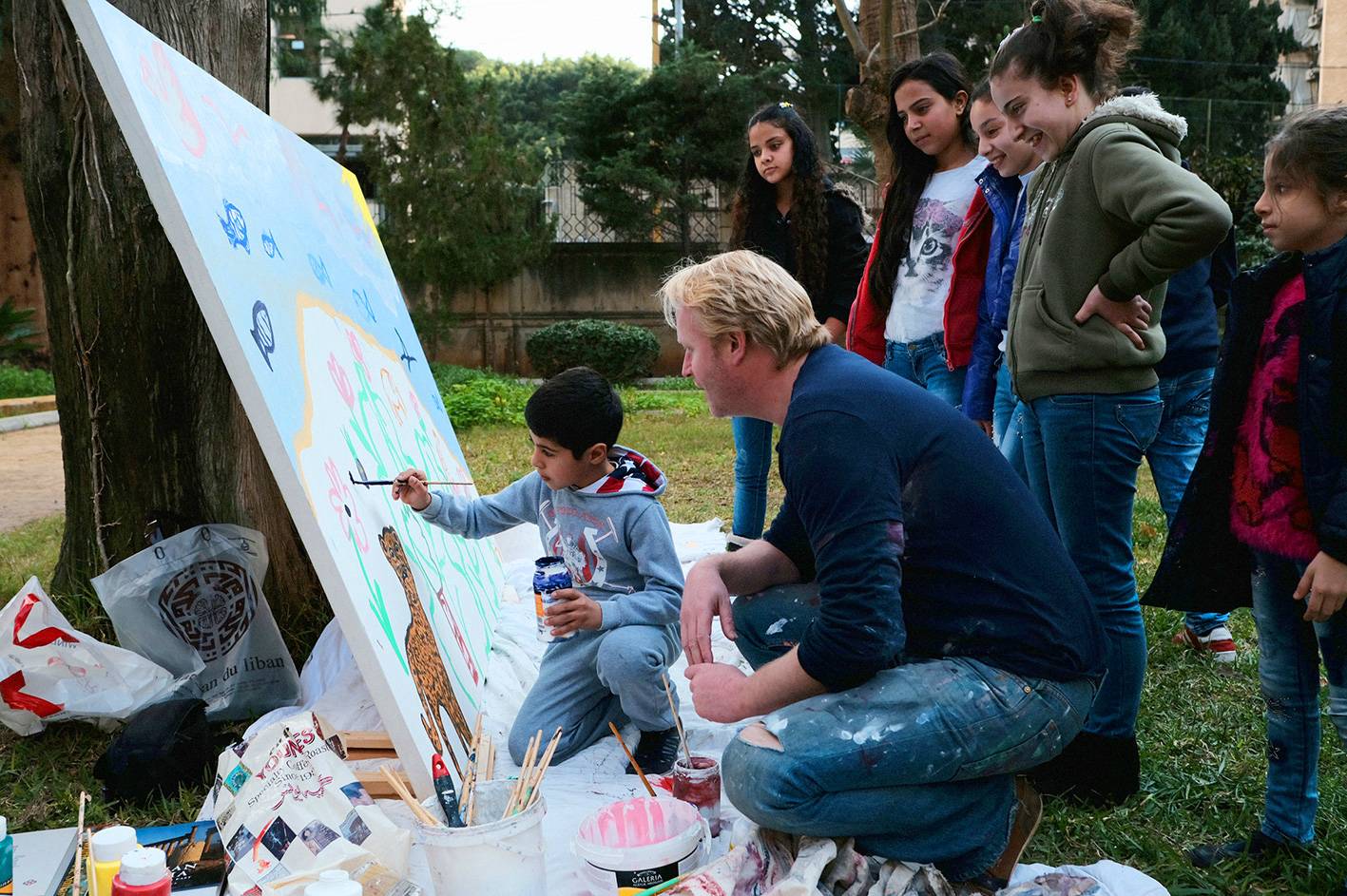
Image by Karim Sakr
As many of us will agree, some of these old and abandoned houses lack the love they need, yet carry so much potential to become something for the community.
“I couldn’t understand why children were not going there and enjoying it. It is a magical place for their imaginations. So I proposed to a committee (set up by the Institution to manage the project) that children from Dar Al Aytam’s various orphanages around Lebanon be brought to the house, and we use it as a base to draw in, and explore the local historical sights of Zarif and Zuqaq El Blatt.”
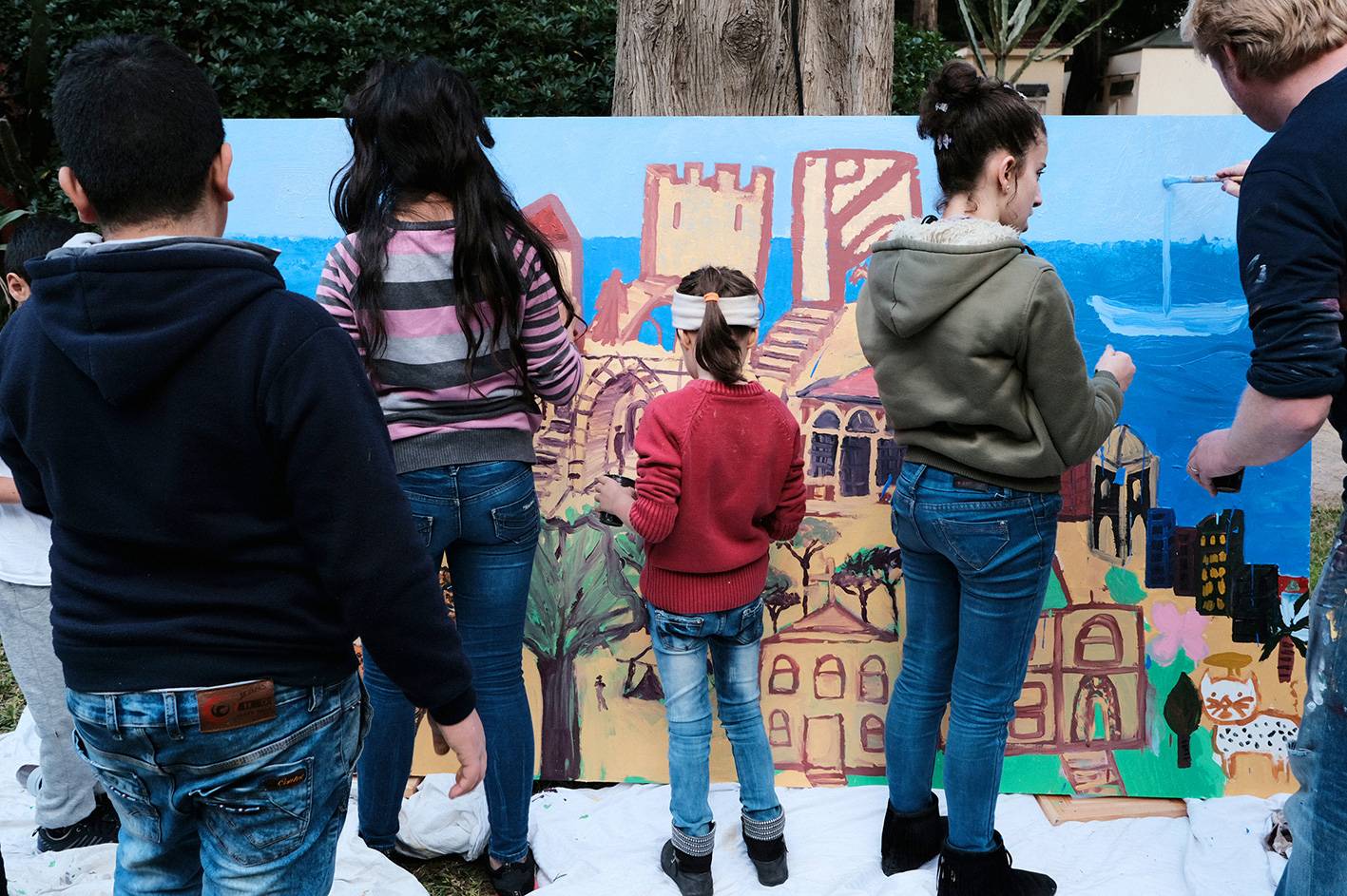
Image by Karim Sakr
Young tells us of the interaction him and the children had with the entire area, including with the legendary Fairuz’s childhood home.
This project was a breath of fresh air for what is seemingly a technology-obsessed society. “Many children now are growing up with short attention spans because of digital technology and camera phones.Whilst these have their place, its important for the children to be able to take their time, and focus on really looking at the world in a creative way.”

Image by Karim Sakr
However, this exhibition carries a more powerful meaning, and sends a powerful message regarding the preservation of Beirut’s fading heritage.
“By doing an exhibition together about these precious places, we were sending a message to those in power how beautiful and special these places are, and how we need to preserve them. We hope we can help save them. With their vivid colors and bold lines, the children help us see built heritage in a new, fresh way”

Image by Karim Sakr
Finally, he tells us that “the final video consists of two separate animations of Beirut seen from two perspectives – East to West, and West to East. Or another way of looking at it, from Mountains to Sea, and Sea to Mountains. For this is what Beirut is: a meeting place of different cultures. Its also symbolic of seeing the same thing from different perspectives, therefore a metaphor for healing some of the divisions which have, and continue to divide the city. The children can show us how.”
1
Beirut.com spoke to Young about this project. In previous conversations, Young expressed his love and strong connection with Beirut, which stemmed from our wartime suffering, and his own.

Image by Karim Sakr
Things haven’t exactly got better. Beirut’s state has deteriorated into chaos and rubbish (literally). Despite this, Young notes, “my love has taken a bashing. But that’s Beirut. It isn’t easy. And that’s how you know its real. Despite these serious challenges, the love survives. There are many positive stories too. The owners of Villa Paradiso have stayed true to their word and fully renovated it, there are many other exciting renovation projects happening, and on the whole the creative arts scene in Beirut now is better than I have ever known.”

Young is particularly passionate about preserving Beirut’s heritage.
On the concept behind the project, he tells us, “the idea behind the animation is to engage the children of Dar Al Aytam Al Islamiyeh in a collective project that we can all join together to create something fun, meaningful and beautiful together. Painting on the same canvas over and over again is a good way to express the many layers of history and memory embedded in the city, and an appropriate way to re-enact its constant cycles of destruction and reinvention. We explored its history from ancient times to the present day. By photographing each stage, nothing is lost. Its all part of the story.”

Image by Karim Sakr
As many of us will agree, some of these old and abandoned houses lack the love they need, yet carry so much potential to become something for the community.
“I couldn’t understand why children were not going there and enjoying it. It is a magical place for their imaginations. So I proposed to a committee (set up by the Institution to manage the project) that children from Dar Al Aytam’s various orphanages around Lebanon be brought to the house, and we use it as a base to draw in, and explore the local historical sights of Zarif and Zuqaq El Blatt.”

Image by Karim Sakr
Young tells us of the interaction him and the children had with the entire area, including with the legendary Fairuz’s childhood home.
This project was a breath of fresh air for what is seemingly a technology-obsessed society. “Many children now are growing up with short attention spans because of digital technology and camera phones.Whilst these have their place, its important for the children to be able to take their time, and focus on really looking at the world in a creative way.”

Image by Karim Sakr
However, this exhibition carries a more powerful meaning, and sends a powerful message regarding the preservation of Beirut’s fading heritage.
“By doing an exhibition together about these precious places, we were sending a message to those in power how beautiful and special these places are, and how we need to preserve them. We hope we can help save them. With their vivid colors and bold lines, the children help us see built heritage in a new, fresh way”

Image by Karim Sakr
Finally, he tells us that “the final video consists of two separate animations of Beirut seen from two perspectives – East to West, and West to East. Or another way of looking at it, from Mountains to Sea, and Sea to Mountains. For this is what Beirut is: a meeting place of different cultures. Its also symbolic of seeing the same thing from different perspectives, therefore a metaphor for healing some of the divisions which have, and continue to divide the city. The children can show us how.”
1
